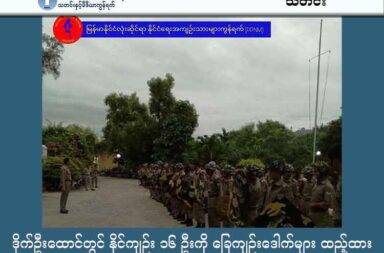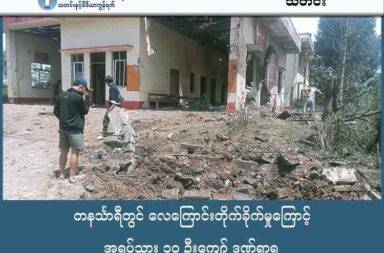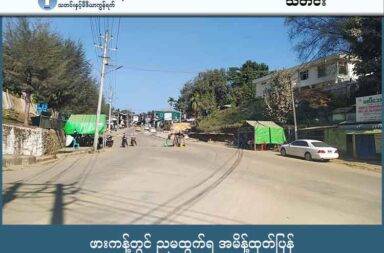Chin Environmental Activists Call on Burma Govt to Halt Laymyo Dam Projects
By NETWORK MEDIA GROUP (NMG)
Thursday, November 6, 2019
Two hydropower dam projects proposed on the Laymyo River in Chin and Rakhine states would negatively affect more than 20,000 people, according to Chin Rivers Watch (CRW).
The dams on the Laymyo—one near Ko Phe She village in Chin State’s Paletwa Township and one near Sai Din village in Rakhine State’s Mrauk-U Township—have been under consideration since 2007. They were initially backed by neighboring Bangladesh, and set to be built by the Chinese company Datang. The projects were put on pause in 2014.
In 2016, after the current National League for Democracy government came to power, the French government allocated US$1 million for a feasibility study on the Laymyo dams, which was carried out by the Belgian-French company Tractebel-Engie.
In a press conference in Yangon on November 4, CRW representatives said that the feasibility study had again been resumed.
CRW secretary Mang Za Hkop said that the pursuit of such mega development projects was inappropriately given the current political circumstances in Burma.
“We don’t want the government to start projects like this until protection laws have been drawn up for ethnic rights and citizens’ rights,” Mang Za Hkop, the CRW secretary, said.
The priority, he added, should be for the government to establish a genuine federal Union in the country in which ethnic communities are guaranteed rights to natural resource management, decision-making, and ownership.
“In Burma, local people have lost their rights because of these kinds of projects. There are no laws protecting local people. Local people don’t get benefits or any authority,” Mang Za Hkop explained.
If completed, the dam in Paletwa would generate 622 megawatts of electricity, and the dam in Mrauk-U would generate around 105 megawatts.
The flooding caused by the hydropower projects on the Laymyo River, which is also known as the Lemro River, threatens to displace people from more than 50 villages, and harm local agricultural practices.
“There are alluvial islands that come up in the Laymyo River in both Chin and Rakhine states during the dry season. There is fertile soil on these islands. Local people can grow various kinds of crops in this soil. After that, our local people sell their vegetables in Rakhine State,” GS Mang, a CRW representative, told media outlets at the press conference. “Farmers depend on these alluvial islands to grow their crops. If a hydropower dam is built, there will be no more land in their area.”
CRW members added that roads used for transportation to the area, would also be cut off by the flooding, but that locals heavily rely on the river itself as a source of transportation.
“Local people will suffer a lot,” secretary Mang Za Hkop said. “First their waterway transportation will be completely cut off. Second, their villages will be underwater. Third, their farmland will be underwater.”
He explained that he was concerned that despite longstanding local objections, the Burmese government would continue to move forward with the dams.
“The government is likely to continue these dam projects. The government has yet to make a public explanation about these projects to its people. It should not be like this,” Mang Za Hkop said.
Additionally, the townships in which the Laymyo dams are proposed in southern Chin State and northern Rakhine State have seen intensified armed conflict between the Burma Army and the Arakan Army since 2015, according to CRW. Thousands of villagers have fled their homes because of the war.
The source of the Laymyo River is the Bungtla waterall in Matupi Township, Chin State. It runs through Paletwa and into Rakhine State before emptying into the Bay of Bengal. It is considered by locals to be one of the most important in rivers in Rakhine State, along with the Kaladan.


